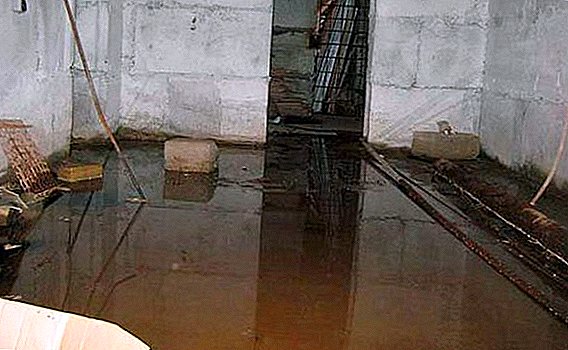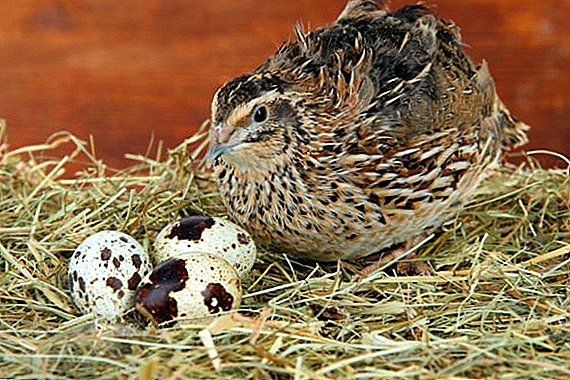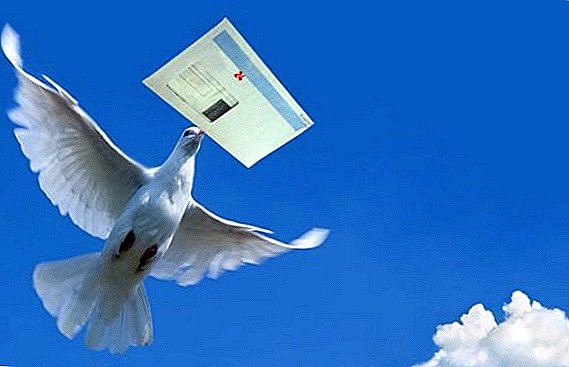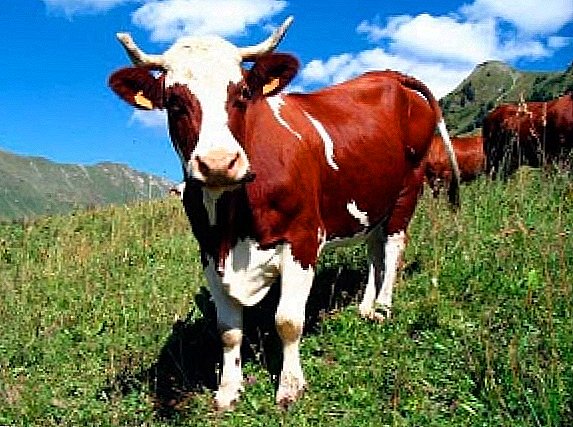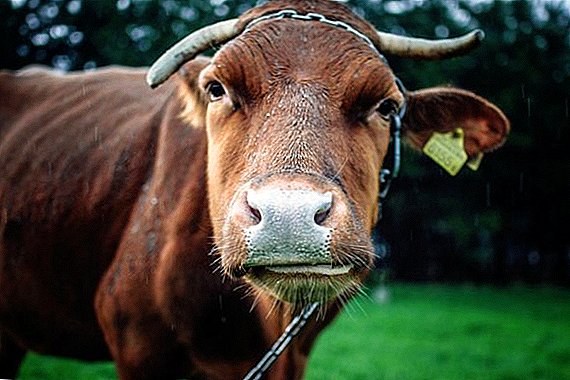 Cattle owners should always be prepared for any abnormal situations with their animals. Sometimes it happens that a gum is lost in cows, and farmers cannot understand why this happens.
Cattle owners should always be prepared for any abnormal situations with their animals. Sometimes it happens that a gum is lost in cows, and farmers cannot understand why this happens.
In our article we will point out the reasons for this deviation and how to deal with it.
Why do cows constantly chew
The chewing of a gum cow is explained by the peculiarities of the structure of its stomach. Being an extension of the esophagus, the stomach accumulates, mixes, digests food and forms a mushy mass (chyme). It is this chyme that moves into the small intestine.
Important! Watch the animal's behavior — emotional stress can often be the cause of gum loss. In this case, it is necessary to create the most favorable conditions for keeping a cow in order to prevent the development of more serious diseases.In the process of digesting complex substances are split into simple ones. This contributes to the impact of saliva and gastrointestinal enzymes. Many believe that the absorption processes are carried out precisely in the stomach, but in fact the process of digesting food ends when it enters the cecum.
There are several types of stomachs: single-chamber (they have dogs, pigs, people) and multi-chamber. Cows are owners of the second species and have a stomach, which consists of four chambers. This fact makes the process of eating food in these animals quite difficult.
 The structure of the stomach of a cow
The structure of the stomach of a cow
- The largest division is the rumen, represented by the bag-shaped organ. Its volume can reach 200 liters. It accumulates food and its further digestion, which requires ciliate enzymes (they are symbionts of the stomach).
- After the scar, there is a movement of the food lump through the net to the section called the book. The grid acts as a kind of filter that can pass only liquids. The regurgitation of gum will occur until food can seep through the net.
- Due to the fact that there is a sour environment in the book, there are no ciliates in it. The acid enters this section from the abomasum, after which the muscles contract and the feed is rubbed.
- Rennet is a glandular part of the stomach, digestion in this part is carried out according to a scheme that is inherent in a single-chamber stomach.
Learn how the stomach of the cow and its digestive system.
The cow lost the gum: reasons
There can be several reasons for an animal to lose gum. Consider the most common ones.
Tympany
The most common cause of the lack of gum is tympania, which is a blockage of the esophagus and the occurrence of gas in the rumen. Symptoms of the disease can occur in a situation where a cow eats food when eating simple grass.

Tympania can also arise from the consumption of stale, moldy or frozen food by animals. Chewing such food has a negative effect on the scar, and an excessive load is created.
In most cases, the cause of the problem is the carelessness of the owners and ignorance of the rules of feeding cows, especially if root vegetables are given for food. It is very important to cut them into large pieces, and not crush.
Did you know? Before calving, many cows want to retire. This desire can be so great that the animal is able to break the fence around the pasture.
The cow, due to its physiological characteristics, is not able to chew small pieces of root crops into mush, so they immediately move into the esophagus, which can lead to blockage of the passage.
In such a situation, a therapeutic method is effective, which consists in pouring vegetable oil into the mouth of an animal (1 cup). Before you pour it, you must carefully open the cow's mouth and try to stick out her tongue as much as possible.  Some owners rub the left side of the pet's abdomen with a brush or straw cord - this can help move the food further and eliminate the blockage.
Some owners rub the left side of the pet's abdomen with a brush or straw cord - this can help move the food further and eliminate the blockage.
Find out why cows are drooling.
Atony
There is another reason why a cow loses its chewing gum - it is atony. The disease is characterized by loss of stomach tone. Its main symptom is loss of appetite in an animal and refusal of food. If the owners do not have the opportunity to feed the cow, this can lead to the fact that the work of the fore-stomachs stops and the digestion stops. As a result of such a deviation, the lethal outcome occurs very quickly.
For treatment, you can use the tincture of hellebore, which is sold in veterinary pharmacies. 2 ml of tincture diluted in 400 ml of water. The resulting mixture must be poured into the mouth of the animal. The procedure is repeated after 20 minutes.
A veterinarian can also help here - he usually injects an injection of a 0.1% solution of "Carbochalin".
Treatment of a cow for an atony of a hem: video
Traumatic reticulitis
This deviation can occur in a situation where hay is used as feed, which could have been hit by nails, broken glass, wire, or other foreign objects. The animal spreads its legs widely, it has a feeling of indisposition, the back is bent.
The cow begins to move very slowly, and attempts to lie down or stand up are accompanied by strong moans. In addition, appetite is lost or reduced, gum deteriorates or disappears completely.
Find out what to do in case of poisoning from a cow and if the cow is full of shreds.
In order to remove metal objects from the animal’s body, it is necessary to use a magnetic probe. If it is not possible to achieve a positive result in this way, then the animal is prescribed a diet - they are fed with flour talkers and soft hay.  Magnetic probe that is taken from the cow
Magnetic probe that is taken from the cow
Calving
The calving period most often occurs at the end of winter. Unfortunately, this joyful event can also be accompanied by the loss of gum, and it is associated with some complications during childbirth.
The first thing the animal prescribed for massages. Massage the sacrum area and hind limbs. This will help the cow to first raise its pelvis, and then stand on its front legs.
A veterinarian must prescribe a special diet to a cow, which includes animal feed and germinated grain, as well as the necessary vitamins.
Important! Ignoring the lack of gum after calving can cause the animal to have another illness - catarrhal mastitis.So that after the calving, the animal does not have any complications, they form a special diet for it, and provide access to fresh air. It is necessary to ensure that the cow is on a horizontal surface.

Why the cow after calving does not chew gum
After calves are born, a cow can stop chewing gum for certain reasons. Consider them.
Milk fever
Maternity paresis is a fairly serious disease in which body temperature near the base of the tail and horns decreases. At the same time the animal can not go to the toilet, the milk loss rate is sharply reduced.
It is difficult for a cow to lie down, so she assumes an S-shaped posture. If these symptoms appear, it is urgent to inject intravenously 10% calcium chloride (200 ml) and glucose (200 ml), and also to pump the udder with air.
Find out what to do if the cow after calving does not get up and ate the afterbirth.
Postpartum complications
If, after calving, the cow begins to lick the calf, then at this moment she can swallow the amniotic fluid or eat the last. The result is a violation of the digestive tract.
To eliminate this problem, it is recommended to give cattle broths and hay infusions, black tea mixed with a solution of alcohol - this will help to disinfect the stomach.

It is also necessary to lay the animal for the cheeks small pieces of old fat, cut into thin plates. This will trigger the gag reflex and eventually return the gum.
Preventive measures
In most cases, the loss of gum in cattle occurs as a result of inadequate care for cows. It is necessary to pay due attention to the diet of animals, use high quality feed, ensure that they are clean and fresh.
When grazing cows, a pasture should be inspected: whether traumatic items, poisonous plants, legumes are in the territory. It is not recommended to graze animals after heavy rains or over dew. If there is a tethered content, then you need to ensure that pets do not eat wet grass. In the drinkers should always be clean water.
Did you know? After each calving, a new ringlet is added to the cow on the horns. If calves are born every year, then by the number of rings you can determine the age of the animal.Malfunctions in the gastrointestinal tract of cattle indicate serious health problems, so when the first symptoms appear, you should contact the veterinarian, who will determine the exact cause of the illness and select the correct treatment. Remember that the responsibility for the life and health of the animal lies with you!
What to do if a cow's chewing gum is gone: video
Reviews






